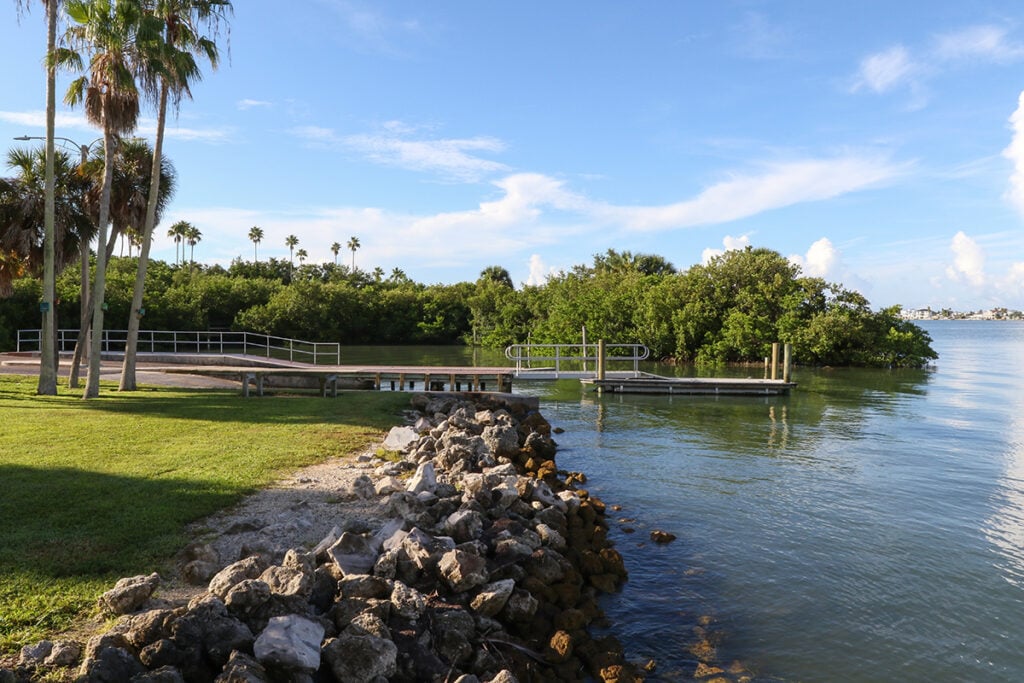Beginning with City Park (today’s Williams Park) in the late 19th century and expanding to the waterfront in the early 20th, St. Petersburg’s parks have a long history of providing locals and visitors with a wide variety of amenities. Today, St. Pete can boast more than 150 city parks and numerous Pinellas County parks. According to the Trust for Public Land, 77 percent of residents live within a 10-minute walk to a park. Park amenities vary depending on location and size and can include picnic areas, playgrounds, beaches, boat ramps, fishing docks, playing fields, sports courts, fitness equipment, trails, nature preserves, art installations, and historic sites. Dogs and skaters even have their own spaces. Parks & Recreation also offers classes, service projects, camps, and a variety of after-school educational programs. Choose an activity or choose to relax, and there’s a park or recreation center that fits your needs.

On the Waterfront
Spanning more than five acres at the edge of the historic Jungle Prada neighborhood, Jungle Prada de Narvaez Park offers visitors convenient parking, two boat ramps, two small shelters, a pier, ample green space, and a walking path. Visitors to the site at Park Street N and Elbow Lane can fish from the pier or relax and enjoy the beautiful view of Boca Ciega Bay from one of the many benches. For those looking to get on the water, the parking lot and two boat ramps are accessible 24 hours per day. The ramps allow vehicles to back their trailers up to the bay to launch larger boats. Lighter craft can set off directly into the water. Jungle Prada de Narvaez Park is a perfect spot to enjoy the outdoor benefits of living in a city on the water. Plus, you might just see one or more of the many peacocks that have made the Jungle Prada neighborhood their domain.

Mounds of History
Jungle Prada de Narvaez also is home to some important local history, including archeological evidence documenting the lives of the indigenous Tocobaga people. Like other mound-building cultures, the Tocobaga were typified by complex social structures and long-distance trade networks. By the end of the 15th century, their domain included dozens of large towns and small villages situated along the coast. The archeological site at Jungle Prada includes public and private property and features mounds constructed between about 1000 and the middle 16th century. Originally stretching for miles, most of the mounds were dismantled in the early 20th century to be used as fill for development. What remains earned the site a place on the National Register of Historic Places in 2003. In addition, evidence of 16th century Spanish contact also has been recovered from the site. The park’s namesake, Panfilo de Narváez, is thought to be the first European to directly encounter the Tocobaga, in 1528. Although likely not the initial landing site of the Spanish people, the Jungle Prada site offers a vital view of the shifting historical arc. It’s well worth a visit.
Details
For more information about Jungle Prada de Narvaez Park and the archeological site or any other of St. Pete’s many parks, visit www.stpeteparksrec.org or call (727) 893-7441.



